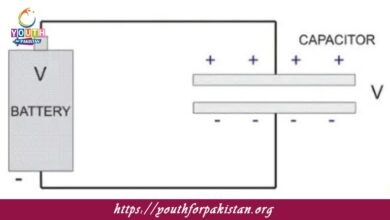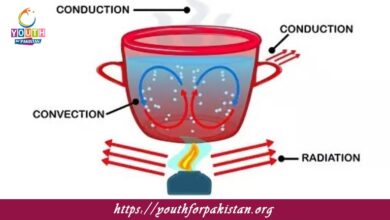Rectification MDCAT MCQs with Answers

Welcome to the Rectification MDCAT MCQs with Answers. In this post, we have shared Rectification Multiple Choice Questions and Answers for PMC MDCAT 2024. Each question in MDCAT Physics offers a chance to enhance your knowledge regarding Rectification MCQs in this MDCAT Online Test.
Rectification MDCAT MCQs Test Preparations
What is the primary purpose of rectification in electronic circuits?
a) To amplify signals
b) To convert AC to DC
c) To store electrical energy
d) To filter noise
Which component is commonly used in rectification circuits?
a) Resistor
b) Capacitor
c) Diode
d) Inductor
In a half-wave rectifier, how many diodes are used?
a) One
b) Two
c) Three
d) Four
Which type of rectifier circuit uses two diodes?
a) Half-wave rectifier
b) Full-wave rectifier
c) Bridge rectifier
d) Peak rectifier
The output of a full-wave rectifier is:
a) Sinusoidal
b) Triangular
c) Pulsating DC
d) Smooth DC
In a bridge rectifier, which configuration is used to convert AC to DC?
a) Series
b) Parallel
c) Series-parallel
d) Bridge
Which rectifier type is known for having a high ripple factor?
a) Half-wave rectifier
b) Full-wave rectifier
c) Bridge rectifier
d) Voltage regulator
The efficiency of a full-wave rectifier compared to a half-wave rectifier is:
a) Lower
b) Higher
c) The same
d) Undefined
In a half-wave rectifier, the average output voltage is:
a) 0.318 Vp
b) 0.637 Vp
c) 0.5 Vp
d) 0.9 Vp
What is the purpose of a filter in a rectifier circuit?
a) To increase the AC frequency
b) To smooth out the rectified output
c) To amplify the signal
d) To decrease the output voltage
Which filter type is commonly used in rectification circuits to smooth DC output?
a) Low-pass filter
b) High-pass filter
c) Band-pass filter
d) Band-stop filter
In a full-wave rectifier using a center-tap transformer, how many diodes are used?
a) One
b) Two
c) Three
d) Four
The ripple frequency of a full-wave rectifier is:
a) The same as the input frequency
b) Twice the input frequency
c) Half the input frequency
d) Four times the input frequency
Which of the following is NOT a type of rectifier circuit?
a) Half-wave
b) Full-wave
c) Bridge
d) Pulse
What is the peak inverse voltage (PIV) rating of a diode used in rectifiers?
a) The maximum voltage the diode can withstand in reverse bias
b) The average DC voltage
c) The minimum forward voltage
d) The maximum current rating
Which component in a rectifier circuit helps to reduce ripple?
a) Capacitor
b) Inductor
c) Resistor
d) Diode
In a bridge rectifier, how many diodes conduct at a time?
a) One
b) Two
c) Three
d) Four
The average output voltage of a bridge rectifier is:
a) Half of the peak voltage
b) The same as the peak voltage
c) 0.9 times the peak voltage
d) 0.637 times the peak voltage
Which rectifier circuit is the simplest to design?
a) Full-wave rectifier
b) Half-wave rectifier
c) Bridge rectifier
d) Voltage doubler
The transformer in a rectifier circuit is used to:
a) Store electrical energy
b) Increase or decrease the AC voltage
c) Convert DC to AC
d) Filter the output
In a half-wave rectifier, the efficiency is typically:
a) 40.6%
b) 50%
c) 60%
d) 80%
Which type of rectifier requires a center-tap transformer?
a) Bridge rectifier
b) Full-wave rectifier
c) Half-wave rectifier
d) Zener rectifier
The ripple factor in a rectifier circuit is:
a) The ratio of DC to AC voltage
b) The measure of the fluctuation in the DC output
c) The ratio of output voltage to input voltage
d) The frequency of the output voltage
Which of the following is a characteristic of a good rectifier circuit?
a) High ripple frequency
b) High peak inverse voltage
c) Low ripple factor
d) High efficiency
In a rectifier circuit, which component is used to prevent current from flowing in the reverse direction?
a) Capacitor
b) Resistor
c) Diode
d) Inductor
In a full-wave rectifier using a bridge configuration, the efficiency is:
a) Higher than a half-wave rectifier
b) The same as a half-wave rectifier
c) Lower than a half-wave rectifier
d) The same as a voltage doubler
Which of the following statements about a half-wave rectifier is true?
a) It uses two diodes
b) It provides a smoother DC output
c) It only uses one diode
d) It can handle both AC and DC input
In a rectifier circuit, the purpose of a smoothing capacitor is to:
a) Increase AC voltage
b) Decrease AC voltage
c) Reduce ripple in the DC output
d) Change the frequency of the input signal
Which type of rectifier circuit is most efficient in converting AC to DC?
a) Half-wave rectifier
b) Full-wave rectifier
c) Bridge rectifier
d) Zener rectifier
The main advantage of a bridge rectifier over a half-wave rectifier is:
a) It provides better smoothing
b) It uses fewer components
c) It works with both halves of the input signal
d) It has a higher peak inverse voltage
What is the ripple frequency in a half-wave rectifier with a 60 Hz input?
a) 30 Hz
b) 60 Hz
c) 120 Hz
d) 240 Hz
Which rectifier circuit configuration provides full-wave rectification with a transformer?
a) Bridge rectifier
b) Half-wave rectifier
c) Center-tap full-wave rectifier
d) Full-wave doubler
The peak inverse voltage (PIV) of a diode in a bridge rectifier should be:
a) Equal to the peak AC voltage
b) Half of the peak AC voltage
c) Twice the peak AC voltage
d) The same as the average DC voltage
Which rectifier circuit is best suited for high-current applications?
a) Half-wave rectifier
b) Full-wave rectifier
c) Bridge rectifier
d) Peak rectifier
The main disadvantage of a half-wave rectifier is:
a) High ripple frequency
b) Low efficiency
c) High peak inverse voltage
d) Large number of components
Which of the following is used to improve the output of a rectifier circuit?
a) Capacitor filter
b) Resistor
c) Inductor
d) Transformer
In a bridge rectifier, the output voltage is approximately equal to:
a) The peak voltage
b) The average voltage
c) The peak voltage minus the diode drops
d) The rectified AC voltage
Which rectifier type can operate without a transformer?
a) Half-wave rectifier
b) Full-wave rectifier
c) Bridge rectifier
d) Zener rectifier
What is the typical efficiency of a bridge rectifier?
a) 40.6%
b) 50%
c) 60%
d) 80%
In which rectifier circuit does the diode only conduct during one half-cycle of the AC signal?
a) Half-wave rectifier
b) Full-wave rectifier
c) Bridge rectifier
d) Peak rectifier
If you are interested to enhance your knowledge regarding Physics, Chemistry, Computer, and Biology please click on the link of each category, you will be redirected to dedicated website for each category.





